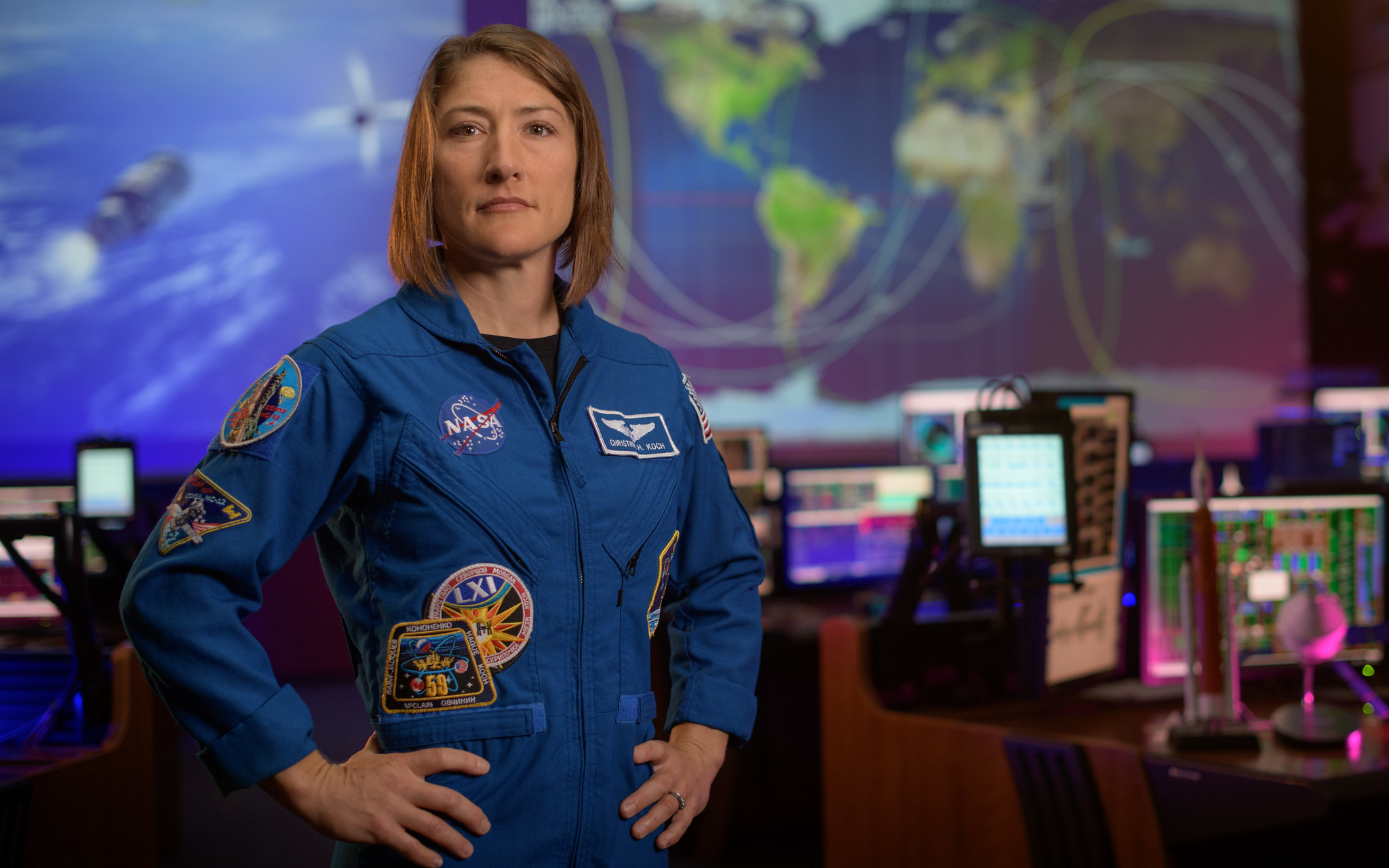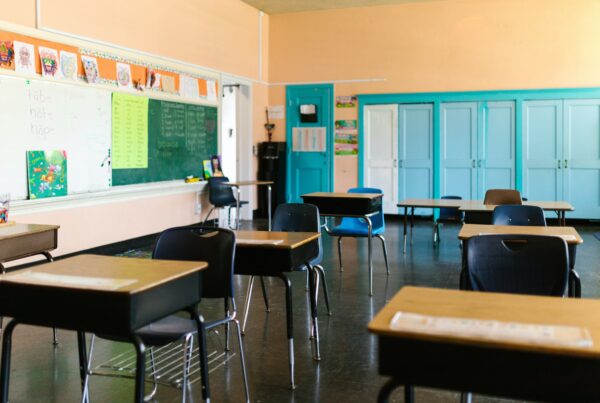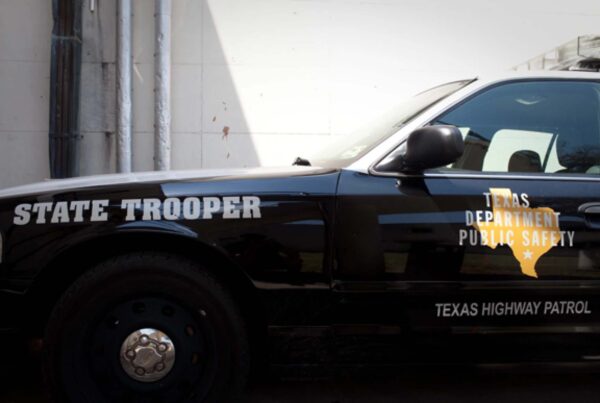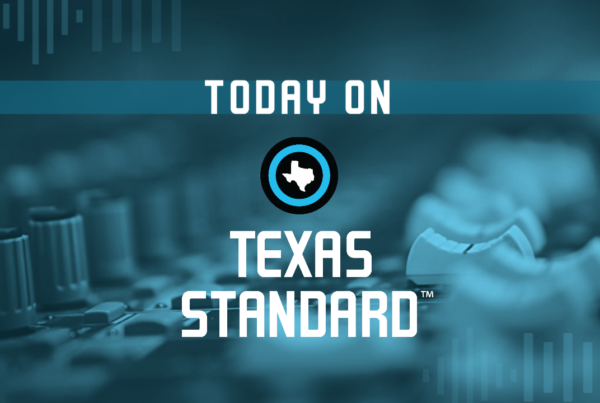NASA plans to launch Artemis II, the first crewed mission to fly to the moon since the early 1970s, in November 2024. The four-person Artemis II crew will orbit the moon during a 10-day mission.
Spaceflight veteran Christina Koch – who holds the record for longest time spent in space by a woman, at 328 days – will be on board. Koch told Texas Standard that Artemis II will provide a chance for the astronauts to learn a lot of what NASA will need to know in order to land a future group of astronauts on the lunar surface.
This transcript has been edited lightly for clarity:
Texas Standard: What does it mean to you to be selected for this mission?
Christina Koch: It means so many different things. I think the first thing I focus on is the mission itself. I often say I don’t think I could be any happier about it, no matter who was assigned. It’s just awesome that we are doing this mission. And we’re going back to the moon. We’re going to stay. We’re going to take what we learn and apply it to go on to Mars.
And the fact that we’re doing that right now is just so exciting. It means a great deal to me to be involved in any way that I can in truly answering humanity’s call to explore.
NASA hasn’t sent astronauts to the moon in the last 50 years, but a lot’s happened in the field of space exploration in between that period. Why is returning to the moon so important?
It’s a great leaping-off point for all of our future exploration. The things that we’ve learned since the Apollo era are many, many. We’ve learned that we can go into space and stay for a long period of time and do deep space exploration missions. We recognize now we have the technology to do a Mars mission once it’s developed and we learn how to live in a sustained way on the moon.
But I think most of all, what we’ve learned is that it’s very important to go for all and by all as we answer humanity’s call to explore. We represent all of humanity, and we’re really taking that with us on this journey.
There’s so much history bound up in this. And in part, that’s because you’ll be making history. But you look back at that first batch of Apollo missions, and it’s remarkable to me how much excitement and the sense of achievement that was palpable in mission control with Apollo 8 – and that wasn’t setting foot on the lunar surface, of course. In a way, there is a parallel, it seems to me, with Artemis II: You’ll be traveling to the Moon, but you won’t be landing. And I’m curious what you and your crewmates need to learn on this mission before people can actually return to the lunar surface.
We are very much honored to be on a mission that is a parallel to Apollo 8, but also in many ways, Apollo 9, which tested some of the rendezvous operations in the vicinity of Earth. And our mission is going to be a combination of both of those things. So we will be flying in the Orion spacecraft for the first time ever, and we’re going to learn everything we can about how we do that best, how we optimize the journey of humans to space and back – the systems of Orion, the life support systems, how it maneuvers in space to enable them to rendezvous and dock with the human landing system.
Because the next mission is going to go to the surface of the moon. Then we’re going to be going back and sustaining that presence and taking what we learned on to Mars. So it is a stepping stone. As my crewmate Victor Glover says, it’s a relay race, and we’re going to hand the baton to the next people, but we’re going to do our best by that batons in our hand as well.
A lot is seems to be on your shoulders in particular. You were saying how much of this is about testing out the new equipment and for the eventual landing. And you are an electrical engineer; your title on board is mission specialist. What are you responsible for in this mission?
As a mission specialist I think our big role is twofold. One, we are executing all the skills that we learned as astronauts in followership, which means we’re supporting our commander and pilot, who are going to be at the displays, at the controls, and we’re going to make sure that holistically as a crew, we respond to every emergency, to every challenge, to every operation with complete and total high performance and efficiency. And we’re basically charged with making sure that all of the systems operate to their peak performance. And that really takes a crew of four to ensure that that’s true.
So any time we’re tasked with something like making sure that the radiation shielding inside the spacecraft can be configured properly, making sure that the life support systems and even the exercise equipment can truly support a crew of four on a mission like this, every single person is needed for that. I do hope as an engineer, I get to put some of that experience to bear. And I think a big part of that is going to actually be before we ever even launch: It’s going to be working with the designers of this vehicle to make sure that our plans for operating it are optimized as we go forward. And that is a true, exciting thing about our mission.
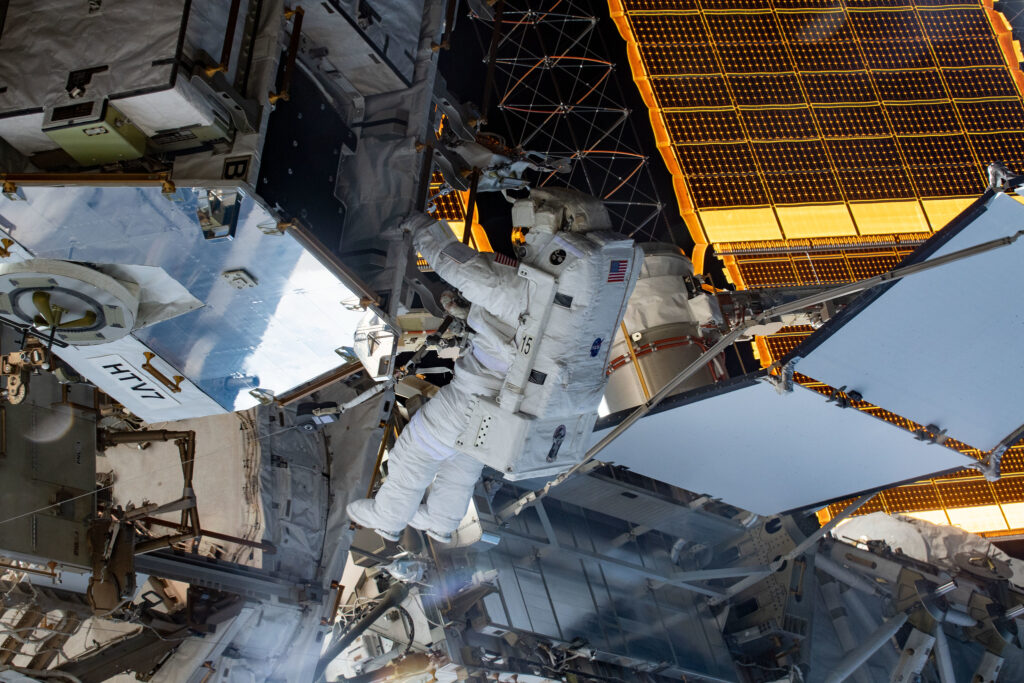
Christina Koch retrieves hardware from a pallet delivered on the Japan Aerospace Exploration Agency’s (JAXA) HTV-7 (H-II Transfer Vehicle-7) to continue upgrading the International Space Station’s power storage capacity in March 2019.
NASA photo
So this flight to the moon and back in 10 days is sort of a drop in the bucket compared to that 328-day stint that you spent on the International Space Station. Does it feel that way to you? Is this just a quick stroll in the park, or no?
Well, I have reflected a lot on how it’s different. And I think there’s a very big difference in terms of the time in the space vehicle. But the preparation and the training is the real place where I think the differences are going to be exciting. For the International Space Station, the training program is very much optimized: You have a ton of different things that you have to learn, but it’s set in stone. Many people have done it before, and it’s a well-oiled machine.
For this mission, we’re going to be writing the book as we go. It’s our responsibility to do things that aren’t necessarily already written out in a book and to take on those challenges that might be not as well-defined as those in the ISS. So though I may not be learning spacewalk training this time around or worrying about being on board for 300 days, we are going to be taking on challenges. We aren’t even sure what they’re going to look like by the time we’re done.
Well, I know that there are going to be a lot of Texans and folks around the world watching you and your crew blast off next year. What should we be looking for? I mean, what would you like to see those of us on Earth, especially young people, learning from Artemis II?
Thank you for that support. And I think the big thing is to see what this mission is as an example of what you can do when you strive for something greater than yourself and you’re not afraid to work together to take on huge challenges.
Personal motivation, leaning into the things that scare you, the things you’re passionate about, and supporting the others around you that are doing the same – that’s all part of what’s going to get us to the moon and to return us safely back to Earth. And I hope that as an analog, as a metaphor for that journey that everyone’s on, we can inspire.


